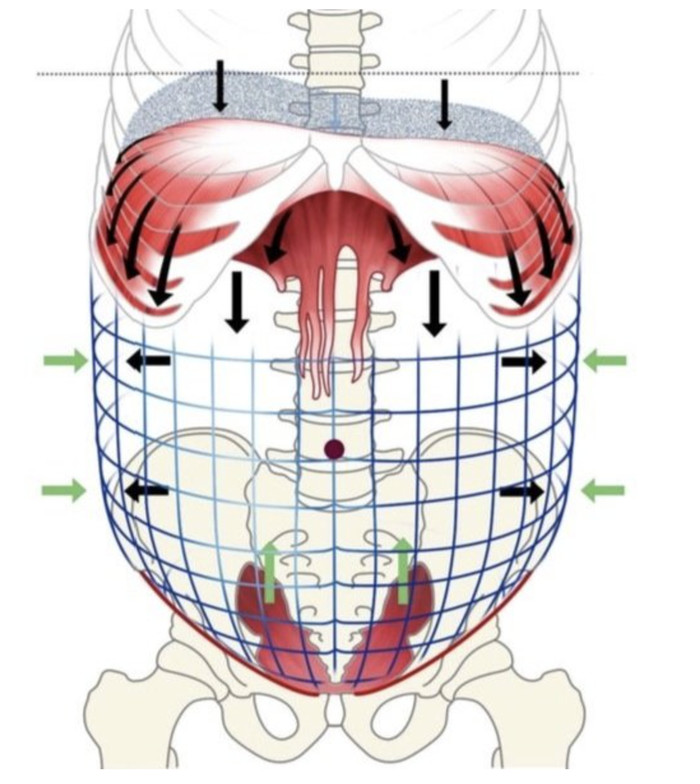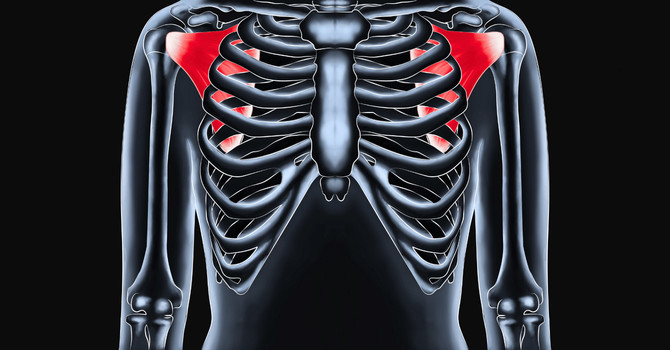
Are you seeking a natural and effective way to improve stability and alleviate pain in your body? Look no further than your breath!
Breathing, specifically diaphragmatic breathing, holds incredible potential for enhancing stability and reducing pain. In this post, we'll explore the principles of Dynamic Neuromuscular Stabilization (DNS) and how incorporating proper breathing techniques can create intra-abdominal pressure and unlock a new world of stability as well as help in pain relief. Let's dive in!
The Importance of Diaphragm Breathing:
The diaphragm is a dome-shaped muscle located below the lungs, separating the chest and abdominal cavities. Its primary function is breathing, but it also plays a crucial role in stability and maintaining proper posture. Diaphragmatic breathing, commonly referred to as belly breathing, involves engaging the diaphragm fully during inhalation and exhalation. This type of breathing activates the diaphragm and optimizes its stabilizing function.
Understanding Intra-Abdominal Pressure:
Intra-abdominal pressure (IAP) refers to the pressure within the abdominal cavity, created by the coordinated action of the diaphragm, pelvic floor muscles, and core muscles. When the diaphragm contracts during inhalation, it drops down, pushing the abdominal contents downward into the pelvic bowl and increasing IAP. This increased pressure provides stability and support to the spine, pelvis, and surrounding structures. Think of it as a natural internal weight lifting belt that helps maintain optimal posture and protect against injury.
Creating Intra-Abdominal:
To harness the benefits of IAP and enhance stability, it's essential to understand how to activate the diaphragm and pelvic floor muscles effectively. Here's a step-by-step guide:
-
Find a comfortable position: Start by finding a relaxed and comfortable position, such as lying on your back or sitting upright. Try to pick a position where to can align the bottom of your rib cage with the top of your hips.
-
Focus on diaphragmatic breathing: Place one hand on your belly and the other on your chest. Take a slow, deep breath in (4 secs) through your nose, allowing your belly to rise and expand while keeping your chest relatively still. Exhale slowly through your mouth (6 secs), allowing your belly to fall back towards your spine. Repeat this deep breathing pattern, focusing on engaging your diaphragm fully.
-
Coordinate with the pelvic floor: As you inhale deeply, imagine a gentle expansion and relaxation of your pelvic floor muscles, located between your pubic bone and tailbone. These muscles work in synergy with the diaphragm, providing additional stability to the core and pelvis.
-
Practice proper alignment: Maintain good posture by aligning your head, neck, and spine in a neutral position. Avoid slouching or excessive arching of the back.
Benefits of Creating Intra-Abdominal Pressure:
By mastering the art of diaphragmatic breathing and activating the pelvic floor muscles, you unlock a host of benefits for stability and pain reduction:
-
Enhanced spinal stability: The increased IAP resulting from diaphragm and pelvic floor activation provides a solid foundation for spinal stability. This stability is vital for maintaining proper alignment, reducing strain on the spine, and preventing injuries.
-
Improved core strength: The coordinated action of the diaphragm, pelvic floor, and deep core muscles during breathing helps strengthen the entire core musculature. A strong core provides stability, supports optimal movement patterns, and alleviates stress on the lower back.
-
Reduced pain and tension: By engaging the diaphragm and pelvic floor, you facilitate relaxation in the surrounding muscles, reducing tension and pain. This relaxation response helps counteract the effects of chronic muscle tension and promotes overall well-being.
Putting It into Practice: Incorporating Breathing Techniques into Your Routine
Now that you understand the importance of diaphragmatic breathing and creating intra-abdominal pressure, it's time to integrate these practices into your daily routine. Here's how:
-
Mindful breathing exercises: Set aside dedicated time each day to practice diaphragmatic breathing. Find a quiet space, free from distractions, and focus on deep inhalations and exhalations. Gradually increase the duration of your practice as you become more comfortable with the technique.
-
Incorporate breathing into activities: Remember to engage your diaphragm and pelvic floor during various activities throughout the day. Whether you're lifting objects, exercising, or performing daily tasks, consciously maintain proper breathing and alignment.
-
Seek guidance from a professional: If you're unsure about proper technique or want personalized guidance, consider consulting a healthcare professional, such as the sports and rehab based chiropractors at 417 Performance. They can assess your breathing patterns, provide tailored exercises, and address any specific concerns you may have.




